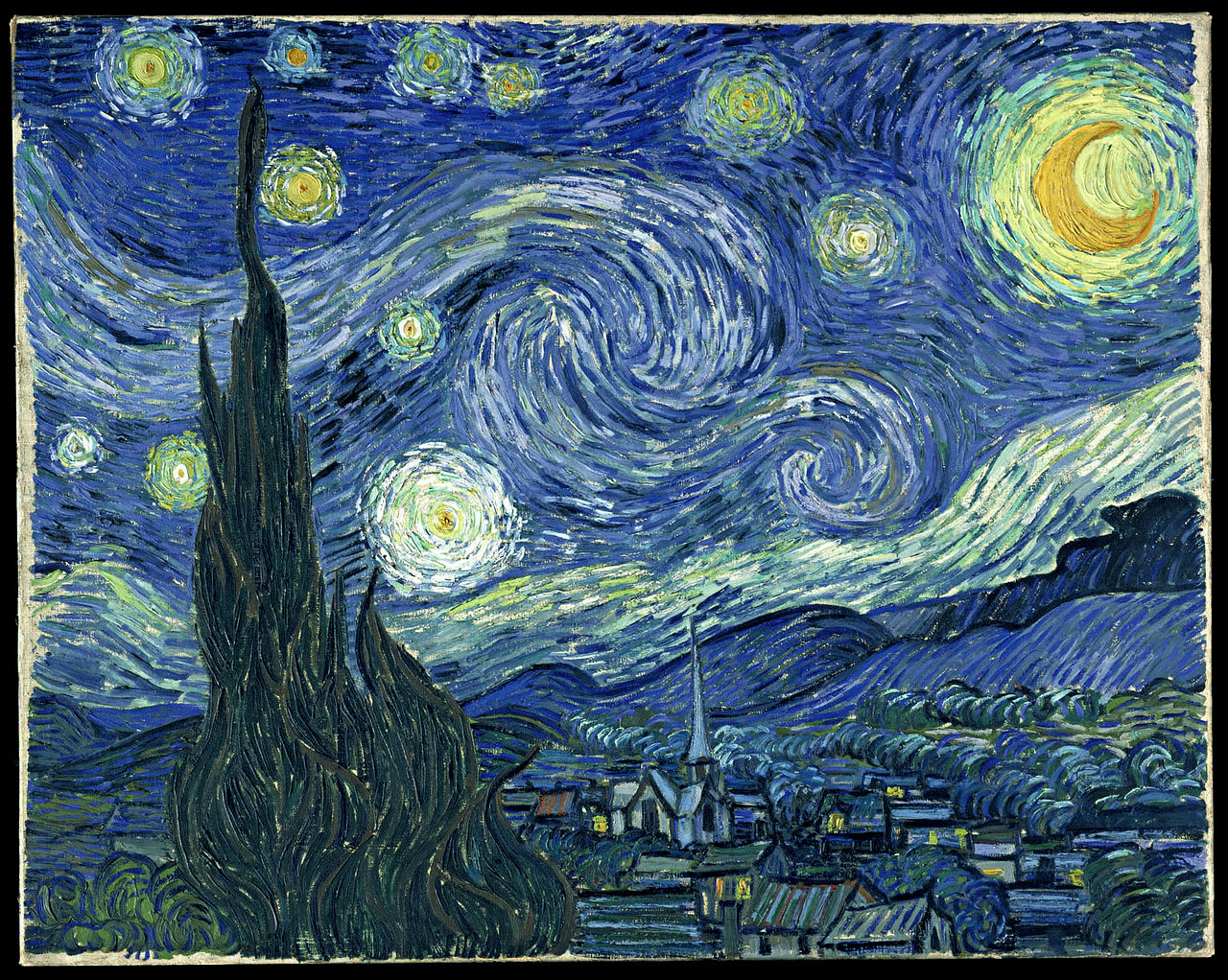“I often felt low in England…but the Black and White and Dickens, are things that make up for it all,” wrote Vincent van Gogh in 1883. The ‘Van Gogh and Britain’ exhibition at the Tate Britain contains many of Van Gogh’s earlier paintings and sketches, which do feel rather Dickensian in their stern monochromatic tones, miserable without the addition of his famous colour.
Van Gogh lived in London on and off between the spring of 1873 and the winter of 1876. Only three small sketches survive from this time. For this reason, the ‘Van Gogh and Britain’ title seems strange, after all, he had not yet started painting when he lived here. However, the central premise of the exhibition remains his influence on and by British art.
The positioning of the paintings is structured to illustrate this: a Van Gogh might be followed by paintings it influenced – like his Shoes and William Nicholson’s Miss Jekyll’s Gardening Boots – or preceded by paintings Van Gogh knew and loved, and which later inspired him. For example, one painting which caught his eye is James Whistler’s Nocturne: Grey and Gold Westminster Bridge (1871-1872), as well as Gustave Doré’s Evening on the Thames (1872). Both are presented alongside Van Gogh’s 1888 Starry Night Over the Rhone. The compositional influence is clear, as is the shared atmosphere of twilight above a still, quiet city river. The two earlier paintings are darker, colder images of Van Gogh’s – photo negatives, almost. By comparison, Starry Night is shot through with colour and romance.
The Van Gogh originals could probably fit into just two or three of the rooms here. The ticket is certainly worth it to be in the same room as Shoes, Starry Night, Sunflowers – if you can push past the crowds enough to properly see, these are as astounding as anyone might expect – but there are far more Van Gogh rip-offs and dark sketches than the huge canvases of swirling colour one might naively hope for. But what the exhibition does provide is a brilliant unfolding narrative: there is scarcely a decade between his early chalk drawings and the bright, giddying brush-marks of his later, most renowned paintings – the majority of which were produced in the two years before he – allegedly – killed himself, aged thirty-seven.
One could perhaps argue that viewing Van Gogh through his relationship with Britain is a little blinkered or reductive, but as the Guardian points out, different exhibitions have already explored his more obvious influences: “Other shows have argued the case for French Impressionism, Japanese prints, the paintings of Rembrandt or Jean-Francois Millet with considerably more success, for the simple reason that these influences are plain to see.” British influence might be smaller, less plain to see, but if it exists then there is no reason not to explore it – the exhibition doesn’t try to deny alternate influences, but simply applies a new, surprising lens to the accepted index of Van Gogh’s inspiration.
Van Gogh loved Dickens, and immediately the exhibition points out his admiration for what he called the “reality more real than reality” of Victorian novels. A row of leather-bound old books that he might have read sits opposite his first painting. “My whole life is aimed at making the things from everyday life that Dickens describes.” That realness of reality seems to be what we see developed here: from the reality of his sad, darkly coloured portraits or avenues or landscapes, to the same subjects multiplied by the colour and the swirling, living brushstrokes he is so well-known for – the added, more real reality of emotion and spirit. Prisoners Exercising, from the Pushkin State Museum of Fine Arts, Moscow, is described by curators as Van Gogh’s only painting of London, made after a print of Newgate Prison by Dore. His feelings of physical and mental entrapment are clear, but the painting is astoundingly bright: ‘a redemptive vision of hell.’
One quotation, highlighted and blown up large on the wall of the exhibition, is by Oskar Kokoschka in Van Gogh’s Influence on Modern Painting: “This artist did face the reality of existence, however disconcerting, rather than close his eyes before the tragic futility of inhuman life!” In the exhibition gift shop, a tin box of card Van Gogh quotes is on sale. The one displayed: “And still to feel the stars and the infinite, clearly, up there. Then life is almost magical, after all.”
The two quotations, though similar in tone, seem almost to oppose each other: one demands a harsh and brave acceptance of reality, and the other resolutely rejects the earthy for the magical, the celestial. It reminds me of Wilde’s Lord Darlington: “We are all in the gutter, but some of us are looking at the stars.” And I think it is this collided contrast that the Van Gogh and Britain exhibition sees develop: acceptance of a very real reality – no matter how harsh and futile – but one that never once loses its sense of life and magic.



